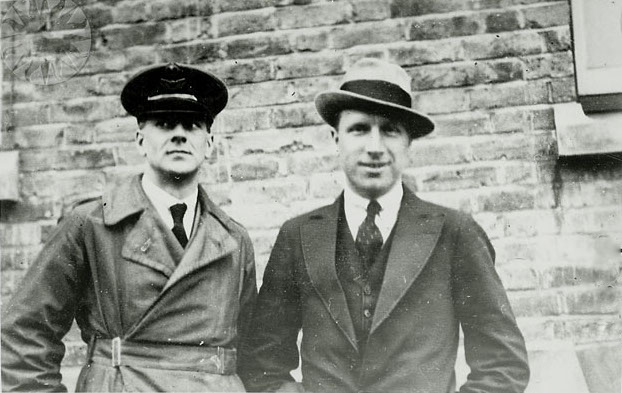100 years since the first nonstop transatlantic flight
“We have had a terrible journey,” John Alcock commented, after completing the first nonstop transatlantic flight with navigator Arthur Brown in June 15th 1919.
Transatlantic air passengers today enjoy hot meals, cold drinks and a reclining seat to enjoy a film, catch up on work or read a book. For British aviators John Alcock and Arthur Brown who flew from Newfoundland to Clifden, Ireland 100 years ago this June, their journey was not quite so relaxing…
Taking off from the makeshift runway in St. Johns, the pair were in rather a hurry and almost didn’t clear the trees at the end. The reason for their rushed take-off was that they were taking part in a competition being held by the British Daily Mail newspaper, and they both very much wanted to win! The prize of £10,000 would be awarded to “the aviator who shall first cross the Atlantic in an aeroplane in flight from any point in the United States of America, Canada or Newfoundland to any point in Great Britain or Ireland in 72 continuous hours” and was contested by several other teams.

Left: Arthur Brown and right: John Alcock
Their aircraft was a modified open cockpit Vickers Vimy biplane constructed from wood, canvas and wire. It had two Rolls-Royce Eagle 360 hp engines.
The aviators experienced extremely challenging setbacks during the flight. The wind-driven electrical generator failed, meaning that there was no heating, no intercom and no radio. On top of this, the exhaust pipe burst making communication between the pair impossible.
Adding to their problems were meteorological conditions including fog, driving rain and snow, with freezing temperatures causing one of the carburettors to ice up. Some reports tell of Brown climbing out onto the wing to chip away at the ice.
The pair very nearly came to a dramatic end when the engine stalled and started to spiral dive towards the ocean, but thankfully Alcock managed to regain control of the aircraft before it reached the water.
John Alcock in The Pilot’s Story commented:
“We have had a terrible journey. The wonder is we are here at all. We scarcely saw the sun or the moon or the stars… The fog was very dense and at times we had to descend with 300 feet of the sea.”
Despite these incredible difficulties, the courageous duo landed safely at 08.40am on 15th June 1919 in Clifden, County Galway - not far from their intended destination - after 16 hours in the air. To add insult to injury, the “green field” they touched down in turned out to be a peat bog, and the plane started to sink.
Very relieved to have landed safely, the pair were - of course - welcomed as heroes. Winston Churchill presented them with the Daily Mail prize and both were knighted by King George V at Windsor Castle. Tragically, John Alcock died only 6 months later, crashing in Rouen, France on the way to Paris Air Show. Arthur Brown survived to reach 62 years old.
The bravery of these two aviators on the first transatlantic crossing heralded a new era in air travel and 100 years on (despite having to overcome the challenges of jet lag) passengers are lucky that levels of comfort have improved dramatically!
To celebrate the centenary, a statue representing the two aviators - usually on display in London Heathrow airport - has been brought to their landing spot in Clifden, Ireland. A new statue of the pair has also been commissioned to stand in St Johns.
First nonstop transatlantic crossing facts
- Distance travelled: 1,980 miles (3,186 km)
- Flight duration: 16 hours 27 minutes
- Average speed 115 mph (185 km/h; 100 knots)
- Carried over 1000 gallons of fuel
- Wingspan 68 feet, length 42 feet

